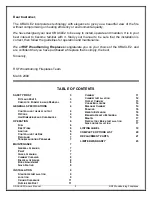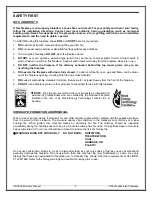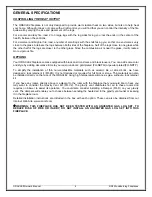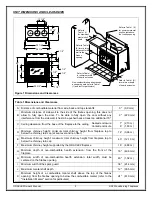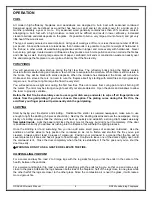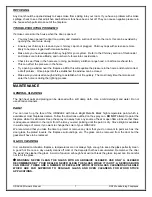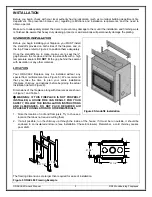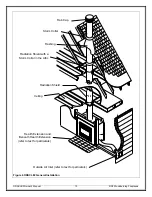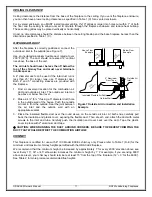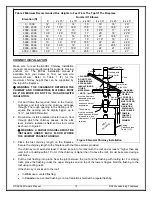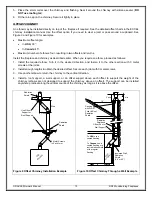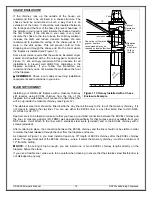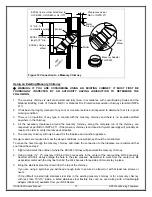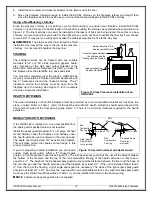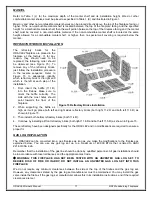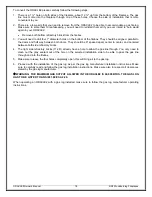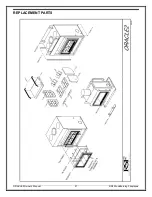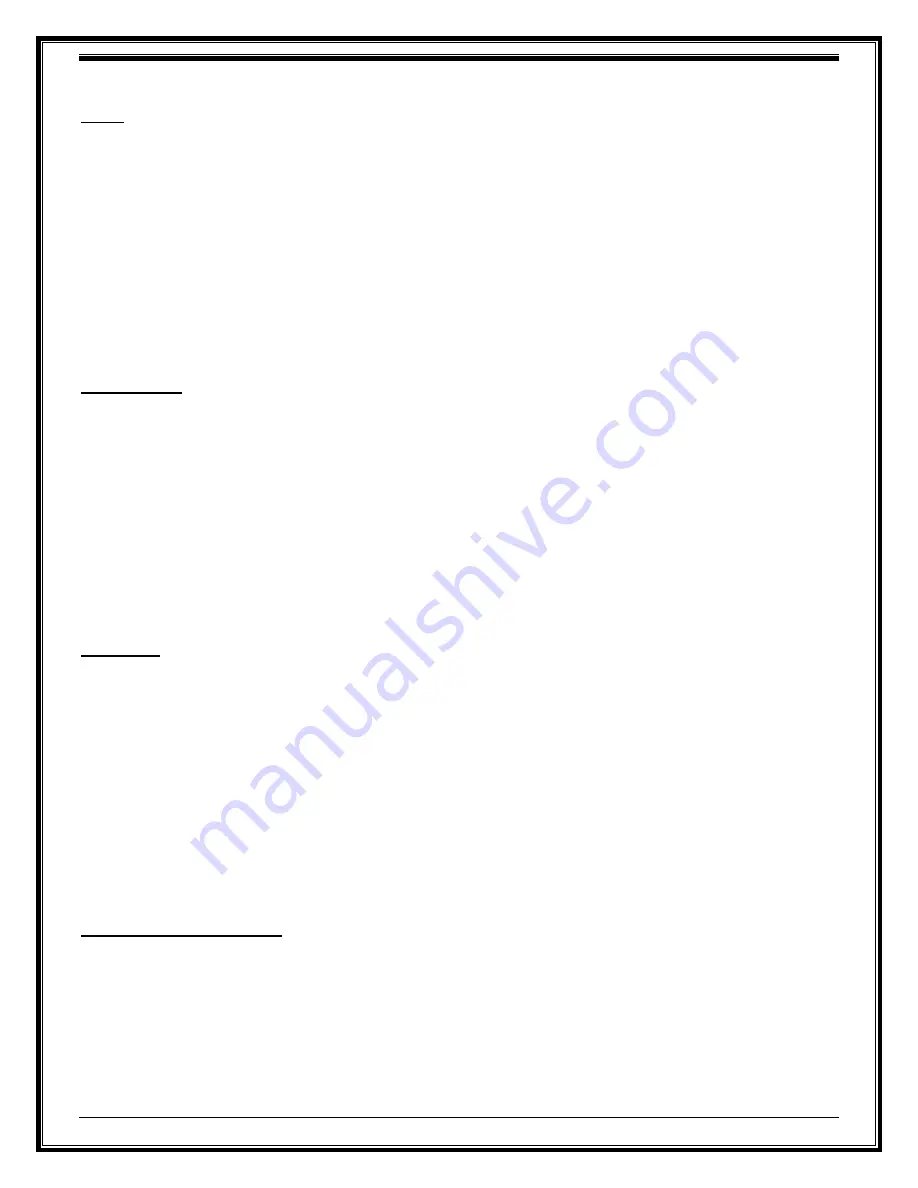
ORACLE2 Owner's Manual
6
RSF Woodburning Fireplaces
OPERATION
FUEL
All modern high efficiency fireplaces and woodstoves are designed to burn best with seasoned cordwood.
Seasoned wood can be defined as wood that has been cut, split and let dry under cover for a minimum of 6
months, preferably a year or more. Dry seasoned wood generally contains less than 20% moisture content.
Attempting to burn fuel with a high moisture content will be difficult and result in lower efficiency, increased
creosote buildup and dark deposits on the glass. It’s possible to burn a very large amount of wood, and get very
little heat if the wood is wet.
The type of wood you select is also important. All types of wood give off more or less the same number of BTU’s
per pound. Since softer woods are less dense than hardwoods it is possible to put more weight of hardwood in
the firebox; in other words all woodburning appliances will burn longer and more evenly with hardwoods. Never
burn scrap, garbage, treated wood or driftwood as they produce much more pollution and can corrode the firebox
and chimney as well. Burning large amounts of paper, cardboard, mill ends or construction waste can easily over
fire and damage the fireplace or even ignite a chimney fire if the flue is dirty.
FIRST FIRES
You will experience a slow start-up during the first few fires. The refractory bricks lining the firebox contain
moisture from manufacturing and require a few hot fires to evaporate the moisture. While there is still moisture in
the bricks, they will be black with smoke deposits. When the moisture has dissipated, the bricks will turn white.
Unlike cast iron stoves, there is no need to cure the fireplace itself by starting with small fires and progressively
larger ones. Feel free to light a large fire from the very start.
You will experience a slight odor during the first few fires. This odor comes from curing paint and oil burning off
the metal. The odor may be strong enough to set off your smoke detector. Open the doors and windows to allow
the room to properly ventilate.
Before the first fire, be absolutely sure to use regular dish soap and water to wipe off all fingerprints and
debris from the gold plating if you have chosen this option. The plating cures during this first fire, the
acid from your finger prints will permanently etch the gold plating.
LIGHTING
Start by laying your fire starter and kindling. Traditional fire starter is crumpled newspaper; make sure to use
enough to light the kindling (5-6 pieces should do). Next lay the kindling crisscrossed over the newspaper. Using
plenty of kindling ensures that the chimney will heat up quickly and establish a strong draft,
never use any
flammable liquids
. Light the paper and close the door most of the way, but don’t shut it completely. If the door
is positioned correctly you will see air rushing into the fireplace, this will help the lighting process.
Once the kindling is lit and sustaining fire, you can add some small pieces of seasoned cordwood. Use the
andirons on either sides to help position the cordwood so as not to flatten and smother the fire you’ve just
created. Always add at least 3 pieces of cordwood. Position your cordwood in a manner that the fire will hit
several pieces as it rises and has air gaps to flow through. Continue to leave one of the doors slightly open until
the cordwood is lit. Close the door completely when the fire is established, if the fire goes out you’ve shut the
door too early.
WARNING: DO NOT USE A GRATE OR ELEVATE THE FIRE.
CONTROLLING THE FIRE
For a cooler and lazy fire, load 2 to 3 large logs with the log sides facing you (not the ends) in the center of the
hearth, between the andirons.
For a warmer and brighter fire, load a number of small logs with the ends facing you so that one end comes very
close to the glass. Alternate the logs between both sides of the fireplace, half of the logs close to one glass while
the other half of the logs are closer to the other glass. Since the combustion air is near the glass, it will create a
more vigorous fire.


